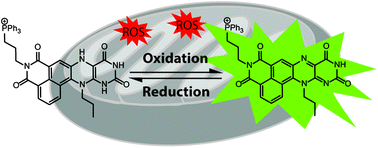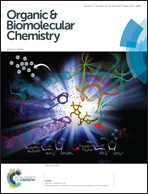Mitochondrially targeted redox probe reveals the variations in oxidative capacity of the haematopoietic cells†
Abstract
Both oxidative stress and mitochondrial dysfunction play roles in a myriad of pathological conditions. There is therefore a need for tools that possess the ability to measure the dynamics of oxidative capacity within the mitochondria, particularly those that can measure reversible changes. Here, we report a mitochondrially-targeted fluorescent redox sensor NpFR2, which can reversibly measure changes in the mitochondrial redox environment. The probe has been used to report on variations in oxidative capacity of the haematopoietic cells in bone marrow, thymus and spleen.


 Please wait while we load your content...
Please wait while we load your content...